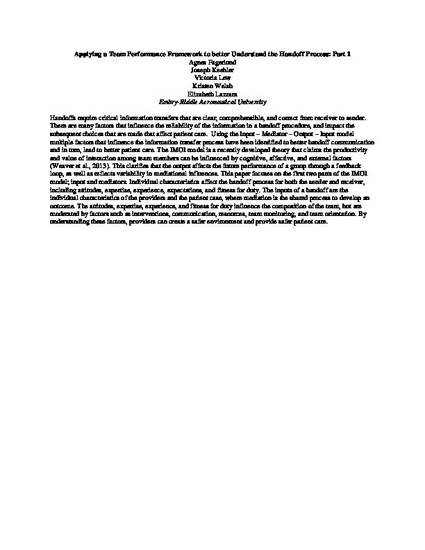
Handoffs require critical information transfers that are clear, comprehensible, and correct from receiver to sender. There are many factors that influence the reliability of the information in a handoff procedure, and impact the subsequent choices that are made that affect patient care. Using the Input – Mediator – Output – Input model multiple factors that influence the information transfer process have been identified to better handoff communication and in turn, lead to better patient care. The IMOI model is a recently developed theory that claims the productivity and value of interaction among team members can be influenced by cognitive, affective, and external factors (Weaver et al., 2013). This clarifies that the output affects the future performance of a group through a feedback loop, as well as reflects variability in mediational influences. This paper focuses on the first two parts of the IMOI model; input and mediators. Individual characteristics affect the handoff process for both the sender and receiver, including attitudes, expertise, experience, expectations, and fitness for duty. The inputs of a handoff are the individual characteristics of the providers and the patient case, where mediation is the shared process to develop an outcome. The attitudes, expertise, experience, and fitness for duty influence the composition of the team, but are moderated by factors such as interventions, communication, resources, team monitoring, and team orientation. By understanding these factors, providers can create a safer environment and provide safer patient care.
Available at: http://works.bepress.com/elizabeth_lazzara/6/

There is a part 2, Victoria Lew will be submitting it.